Development of a Vibration-Based Pre-Alarming Method for Bolt Looseness of Seismic Sway Braces
Abstract
:1. Introduction
2. Nonlinear Vibration Model of SSBs
3. Construction of Four DWIs
3.1. Pre-Alarming Indicator Based on FFT (EI_FFT)
3.2. Pre-Alarming Indicator Based on WP (EI_WP)
3.3. Pre-Alarming Indicator Based on IMF (EI_IMF)
3.4. Pre-Alarming Indicator Based on MHS (EI_MHS)
4. Pre-Alarming Method for Bolting Looseness
- (a)
- The SSBs are first installed at certain positions by tightening their connecting bolts to the designed bolting torque. Then, a wireless vibration sensor equipped with a vibration exciter is installed at the midspan of the bracing components. In the actual projects, the installed wireless vibration sensors wake up at the set intervals and activate the vibration exciter to produce vibration and measure the acceleration data of SSBs. Thereafter, the measured data are transferred to a remote server via a wireless network.
- (b)
- Having obtained the measured acceleration data of SSBs, four signal processing methods, i.e., FFT, WP, IMF and HHT, are applied to process the data at different intervals and transform from time domain to frequency domain focusing on various characteristics. Then, four related DWIs are calculated based on the processed frequency-domain data according to the theories outlined in Section 3.
- (c)
- Experiment or test is carried out to calculate and obtain four initial values of DWIs as the bolting torque equals to design value. Threshold values of four DWIs at the state for slightly damaged and severely damaged are obtained based on the measured acceleration data corresponding to different bolting torques. Finally, the safety sate of SSBs is determined by comparing the calculated results with the threshold value, and the state of slightly or severely damaged can be determined as long as one of four DWIs exceeds the corresponding threshold values.
5. Case Study in an Experiment and an Actual Project
5.1. Experimental Setup
- (a)
- All the bolts of the SSBs are first fastened by a torque spanner to 50 N·m. The acceleration sensor is then powered on to apply external vibration on the SSB specimen and collect acceleration history data. After the acceleration sensor completes ten cycles of the working time domain, the acceleration sensor stops producing vibration and data acquisition.
- (b)
- A bolt of the monitored sway member is loosened using the torque spanner into eight different states with varying torque, i.e., 40 N·m, 30 N·m, 20 N·m, 10 N·m, 8 N·m, 5 N·m, 2 N·m and 0. The same vibrating and monitoring procedure is repeated for each torque level.
- (c)
- The collected acceleration data is processed to obtain the calculated four Pre-alarming indicators for SSBs, i.e., EI_FFT, EI_WP, EI_IMF and EI_MHS, under the above eight states. The average value of the four Pre-alarming indicators is calculated and obtained by eliminating two largest drift points, by which the sensitivity and accuracy of the four indicators are compared and confirmed.
5.2. Experimental Results
5.3. Construction of Pre-Alarming System
5.4. Application in Actual Project
6. Discussion
7. Conclusions
- (1)
- Compared with traditional frequency-based indicators, four recommended pre-alarming indicators exhibit more preferable sensitivity to the bolting torque of the SSBs. As the bolting torque of SSBs reduces from 50 N·m to 2 N·m, the four indicators increase monotonically and nonlinearly, which has shown satisfactory mapping relations with the bolting looseness. According to the repeating test under similar conditions, the mapping relation between the four indicators and bolting torque is stable and reliable, satisfying the requirements for application in actual projects.
- (2)
- The corresponding bolting torques for the slightly-damaged and severely-damaged states are recommended as 30 N·m and 20 N·m, respectively, and SSBs can be assessed as safe as all four pre-alarming indicators are smaller than the threshold value of slightly damaged. Through verification in an actual project, the recommended multi-level safety evaluation method can accurately assess actual bolting looseness of SSBs, where the bolting torque of monitored SSBs corresponds well with four pre-alarming indicators.
- (3)
- Although the recommended method can effectively evaluate the events of bolting looseness, the relationship between the bolting looseness and seismic capacity of the SSB structure is diversified and complicated. In the future, investigations must be conducted to establish pre-alarming indicators that are indirectly related to the seismic capacity of the SSB structure.
Author Contributions
Funding
Data Availability Statement
Conflicts of Interest
References
- Ayers, J.M.; Phillips, R. Northridge Earthquake Hospital Water Damage Study; Ayers & Ezers Associates, Inc.: Los Angeles, CA, USA, 1996. [Google Scholar]
- Ju, B.S. Seismic Fragility of Piping System; North Carolina State University: Raleigh, NC, USA, 2012. [Google Scholar]
- Mizutani, K.; Kim, H.; Kikuchihara, M.; Nakai, T.; Nishino, M.; Sunouchi, S. The damage of the building equipment under the 2011 Tohoku pacific earthquake. In Proceedings of the 9th International Conference on Urban Earthquake Engineering & 4th Asia Conference on Earthquake Engineering, Tokyo, Japan, 6–8 March 2012; Tokyo Institute of Technology: Tokyo, Japan, 2012. [Google Scholar]
- Tian, Y.; Filiatrault, A.; Mosqueda, G. Seismic response of pressurized fire sprinkler pi** systems I: Experimental study. J. Earthq. Eng. 2015, 19, 649–673. [Google Scholar] [CrossRef]
- Miranda, E.; Mosqueda, G.; Retamales, R.; Pekcan, G. Performance of nonstructural components during the 27 February 2010 Chile earthquake. Earthq. Spectra 2012, 28, 453–471. [Google Scholar] [CrossRef]
- Pickett, M.A. The Effects of the 17 January 1994 Northridge Earthquake on Hospital Lifelines, Technical council on Lifeline Earthquake Engineering Monograph, Lifeline Earthquake Engineering. In Lifeline Earthquake Engineering; ASCE: Reston, VA, USA, 1995. [Google Scholar]
- Tian, Y. Experimental Seismic Study of Pressurized Fire Suppression Sprinkler Piping System. Ph.D. Thesis, University at Buffalo, Stale University of New York, New York, NY, USA, 2012. [Google Scholar]
- Shang, Q.; Wang, T. Experimental study on seismic performance of flexible pipelines used in base isolated buildings. J. Nat. Disasters 2018, 27, 50–60. [Google Scholar]
- Wood, R.L.; Hutchinson, T.C.; Hoehler, M.S.; Kreidl, B. Experimental characterization of trapeze assemblies supporting suspended nonstructural systems. In Proceedings of the Tenth U.S. National Conference on Earthquake Engineering, Anchorage, Alaska, 21–25 July 2014. [Google Scholar]
- Filiatrault, A.; Perrone, D.; Brunesi, E.; Beiter, C.; Piccinin, R. Effect of cyclic loading protocols on the experimental seismic performance evaluation of suspended piping restraint installations. Int. J. Press. Vessel. Pip. 2018, 166, 61–71. [Google Scholar] [CrossRef]
- Shang, Q.; Qiu, L.; Wang, T.; Li, J. Experimental and analytical study on performance of seismic sway braces for suspended piping systems. J. Build. Eng. 2022, 57, 104826. [Google Scholar] [CrossRef]
- He, S.; Qu, Z.; Zhou, H.; Dai, J.; Wang, D. State of the practice review of lesting nonstructural components in seismic areas. China Civ. Eng. J. 2017, 9, 16–27. (In Chinese) [Google Scholar]
- He, S.; Qu, Z.; Ye, L. Experiment study on the seismic fragility of water supply pipelines in buildings. China Civ. Eng. J. 2018, 51, 9. (In Chinese) [Google Scholar]
- Meng, J. Research on Intelligent Monitoring System of Seismic Support Hanger. Ph.D. Dissertation, Southeast University, Nanjing, China, 2012. (In Chinese). [Google Scholar]
- Ministry of Housing and Urban-Rural Development of the People’s Republic of China; National standard of the People’s Republic of China. Code for Seismic Design of Building Electromechanical Engineering; China Architecture and Building Press: Beijing, China, 2015. [Google Scholar]
- Deng, Z.; Huang, M.; Wan, N.; Zhang, J. The Current Development of Structural Health Monitoring for Bridges: A Review. Buildings 2023, 13, 1360. [Google Scholar] [CrossRef]
- Huang, M.; Zhang, J.; Li, J.; Deng, Z.; Luo, J. Damage identification of steel bridge based on data augmentation and adaptive optimization neural network. Struct. Health Monit. 2024, 14759217241255042. [Google Scholar] [CrossRef]
- Huang, M.; Zhang, J.; Hu, J.; Ye, Z.; Deng, Z.; Wan, N. Nonlinear modeling of temperature-induced bearing displacement of long-span single-pier rigid frame bridge based on DCNN-LSTM. Case Stud. Therm. Eng. 2024, 53, 103897. [Google Scholar] [CrossRef]
- Qu, W.; Zhang, M.; Zhou, J.; Xiao, L. Using Sub-harmonic Resonance to Detect Bolted Joint Looseness. J. Vib. Meas. Diagn. 2017, 37, 5. (In Chinese) [Google Scholar]
- Esmaeel, R.A.; Taheri, F. Application of a simple and cost-effective method for detection of bolt self-loosening in single lap joints. Nondestruct. Test. Eval. 2013, 28, 208–225. [Google Scholar] [CrossRef]
- Hartwigsen, C.; Song, Y.; McFarland, D.; Bergman, L.; Vakakis, A. Experimental study of non-linear effects in a typical shear lap joint configuration. J. Sound Vib. 2004, 277, 327–351. [Google Scholar] [CrossRef]
- Jaques, J.; Adams, D.E. Using Impact Modulation to Detect Loose Bolts in a Satellite; Springer: New York, NY, USA, 2012. [Google Scholar] [CrossRef]
- Loutridis, S. Damage detection in gear systems using empirical mode decomposition. Eng. Struct. 2004, 26, 1833–1841. [Google Scholar] [CrossRef]
- Huang, N.E. New method for nonlinear and nonstationary time series analysis: Empirical mode decomposition and Hilbert spectral analysis. Proc. SPIE Int. Soc. Opt. Eng. 2000, 4056, 197–209. [Google Scholar] [CrossRef]
- Mincigrucci, L.; Civera, M.; Lenticchia, E.; Ceravolo, R.; Rosano, M.; Russo, S. Comparative Structural Analysis of GFRP, Reinforced Concrete, and Steel Frames under Seismic Loads. Materials 2023, 16, 4908. [Google Scholar] [CrossRef]
- Marco, C.; Cecilia, S. Instantaneous Spectral Entropy: An Application for the Online Monitoring of Multi-Storey Frame Structures. Buildings 2022, 12, 310. [Google Scholar] [CrossRef]
- Zhang, J.; Huang, M.; Wan, N.; Deng, Z.; He, Z.; Luo, J. Missing measurement data recovery methods in structural health monitoring: The state, challenges and case study. Measurement 2024, 231, 114528. [Google Scholar] [CrossRef]
- Qiu, L.; Yuan, S.; Zhang, X.; Wang, Y. A time reversal focusing based impact imaging method and its evaluation on complex composite structures. Smart Mater. Struct. 2011, 20, 105014. [Google Scholar] [CrossRef]
- Dutt, A.; Rokhlin, V. Fast Fourier Transforms for Nonequispaced Data. Siam J. Sci. Comput. 1993, 14, 1368–1393. [Google Scholar] [CrossRef]
- Ding, Y.L.; Li, A.Q.; Deng, Y. Structural Damage Warning of a Long-Span Cable-Stayed Bridge Using Novelty Detection Technique Based on Wavelet Packet Analysis. Adv. Struct. Eng. 2010, 13, 291–298. [Google Scholar] [CrossRef]
- Rai, V.K.; Mohanty, A.R. Bearing fault diagnosis using FFT of intrinsic mode functions in Hilbert–Huang transform. Mech. Syst. Signal Process. 2007, 21, 2607–2615. [Google Scholar] [CrossRef]
- Kunwar, A.; Jha, R.; Whelan, M.; Janoyan, K. Damage detection in an experimental bridge model using Hilbert–Huang transform of transient vibrations. Struct. Control. Health Monit. 2013, 20, 1–15. [Google Scholar] [CrossRef]
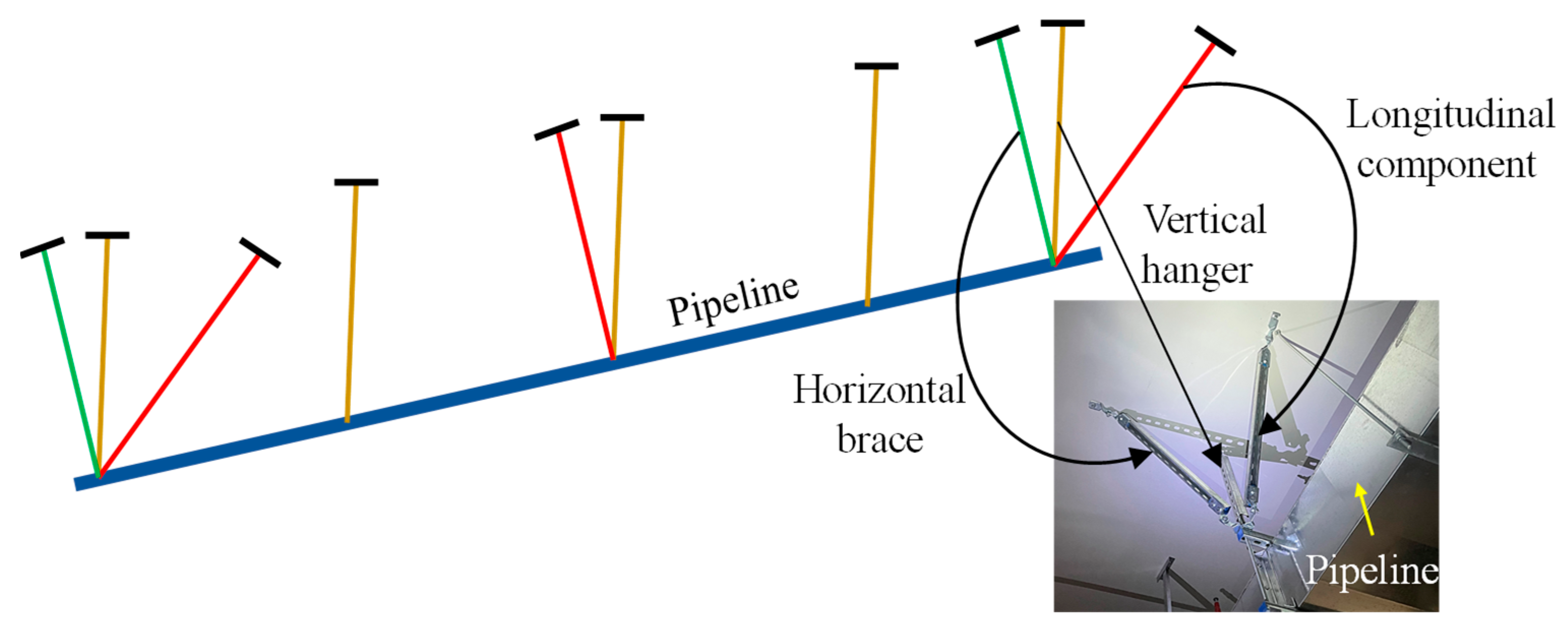
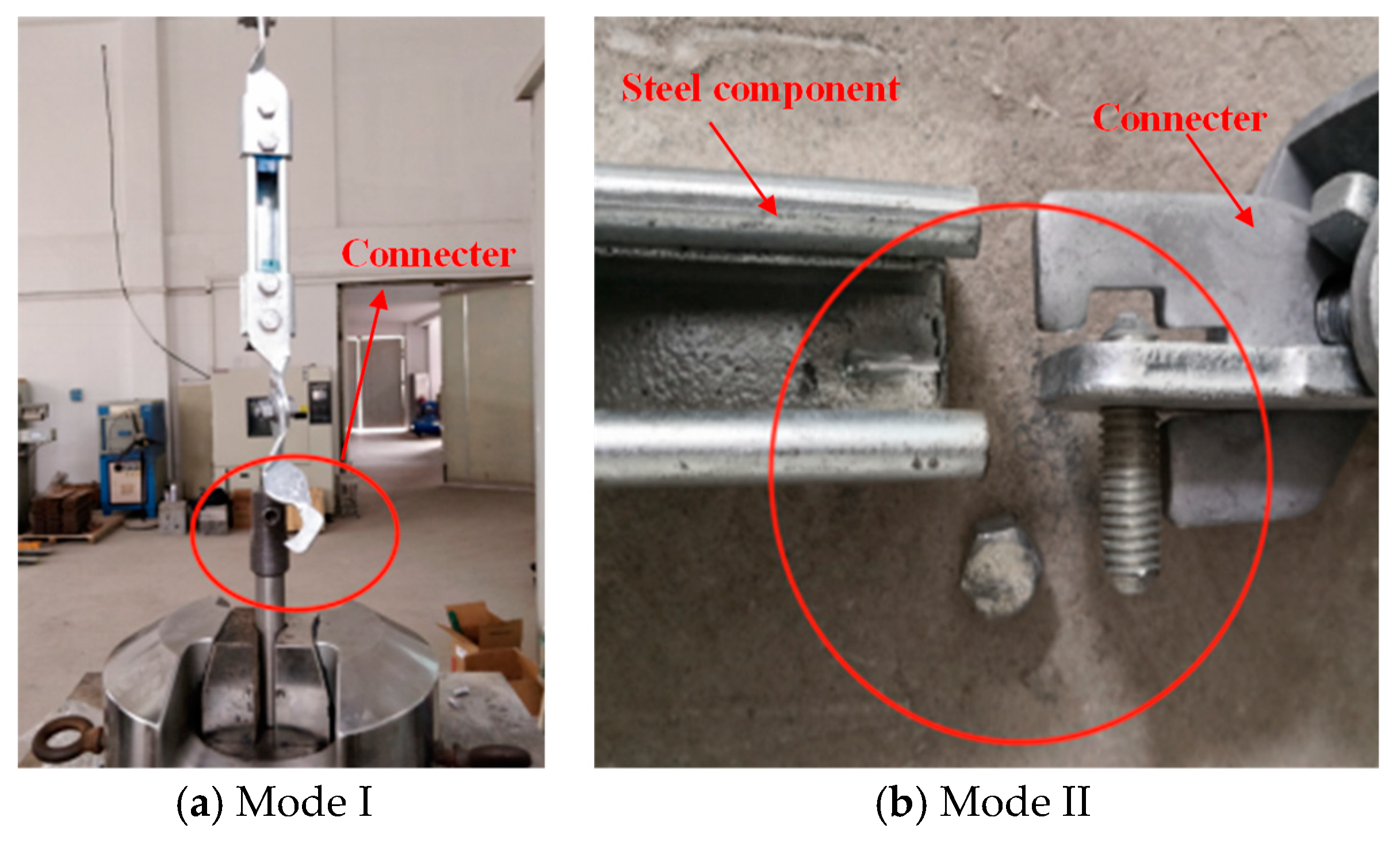
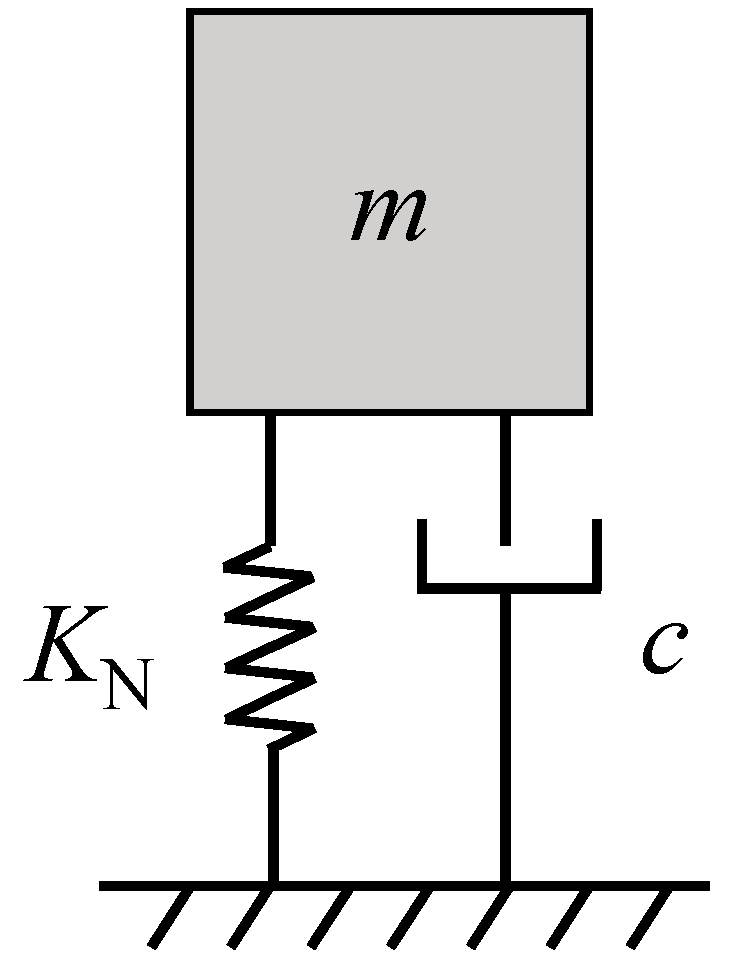


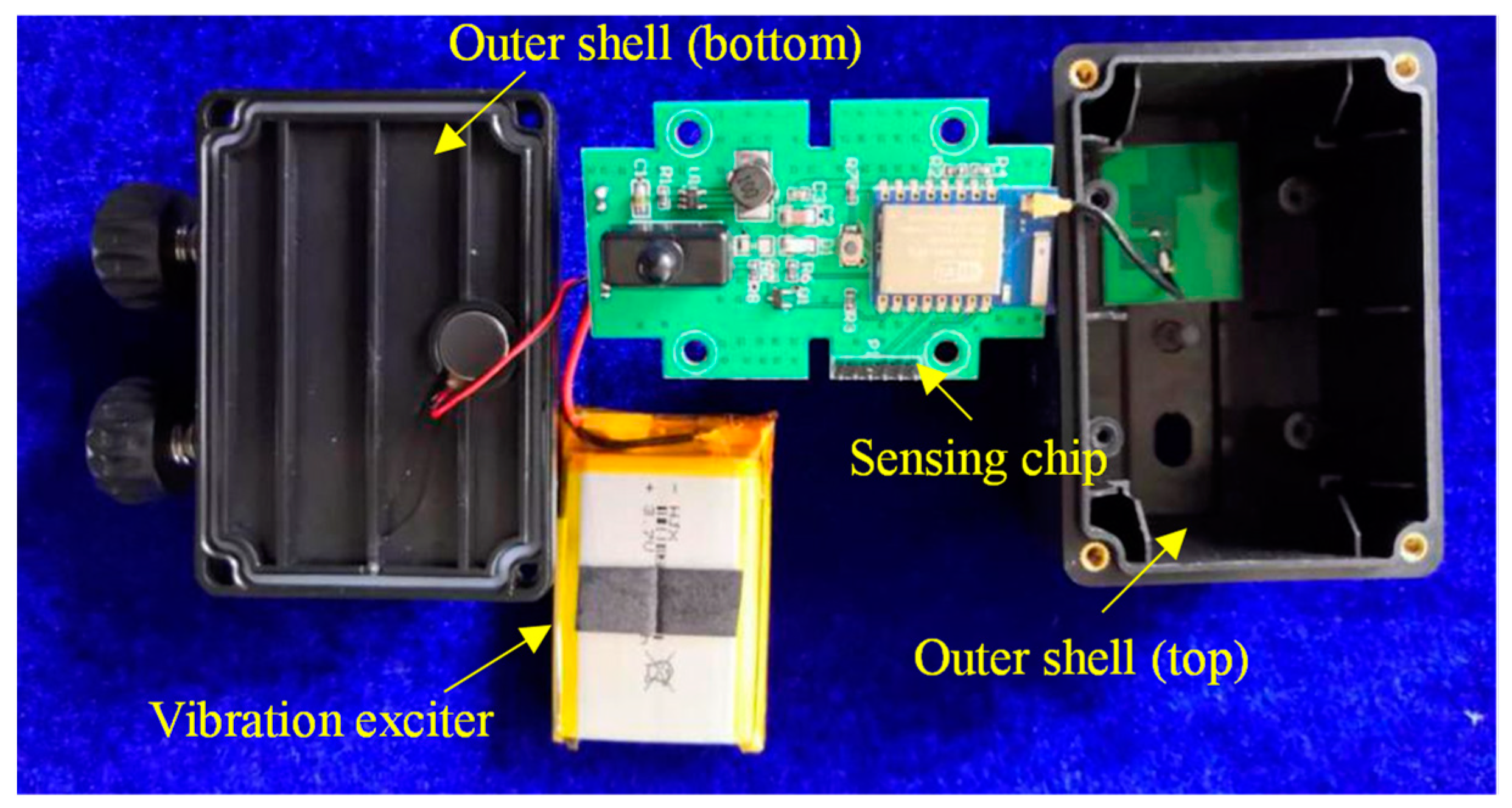
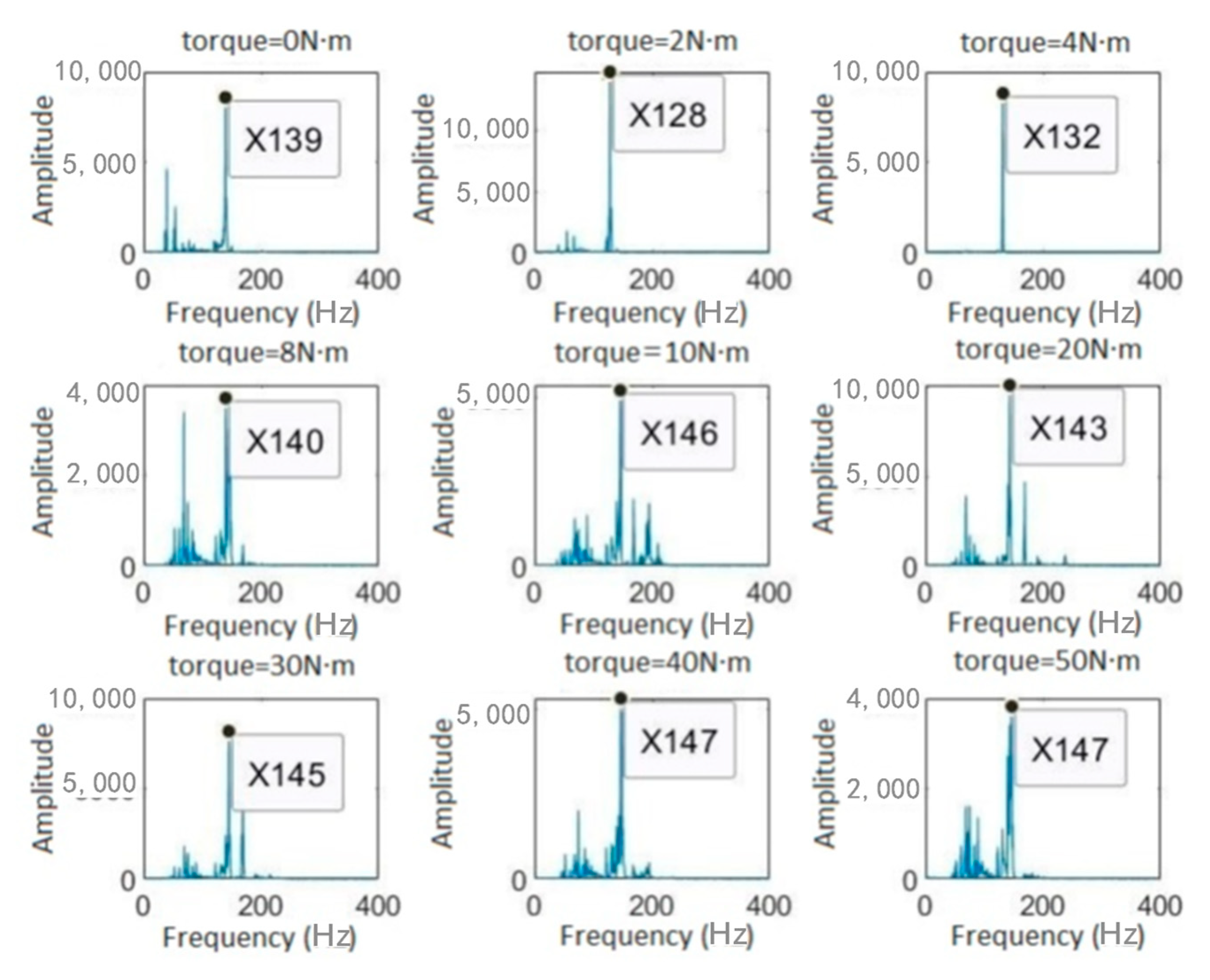

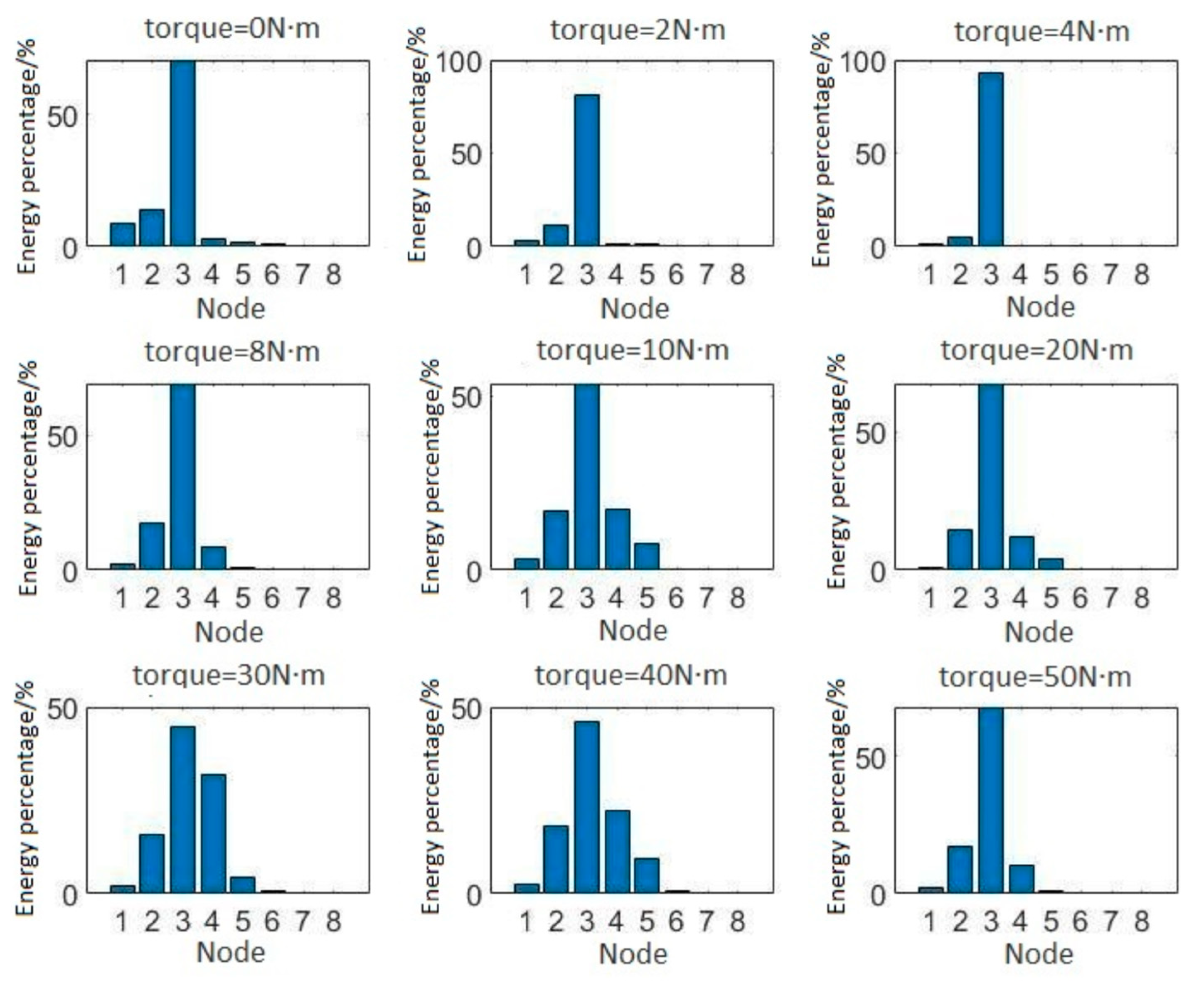
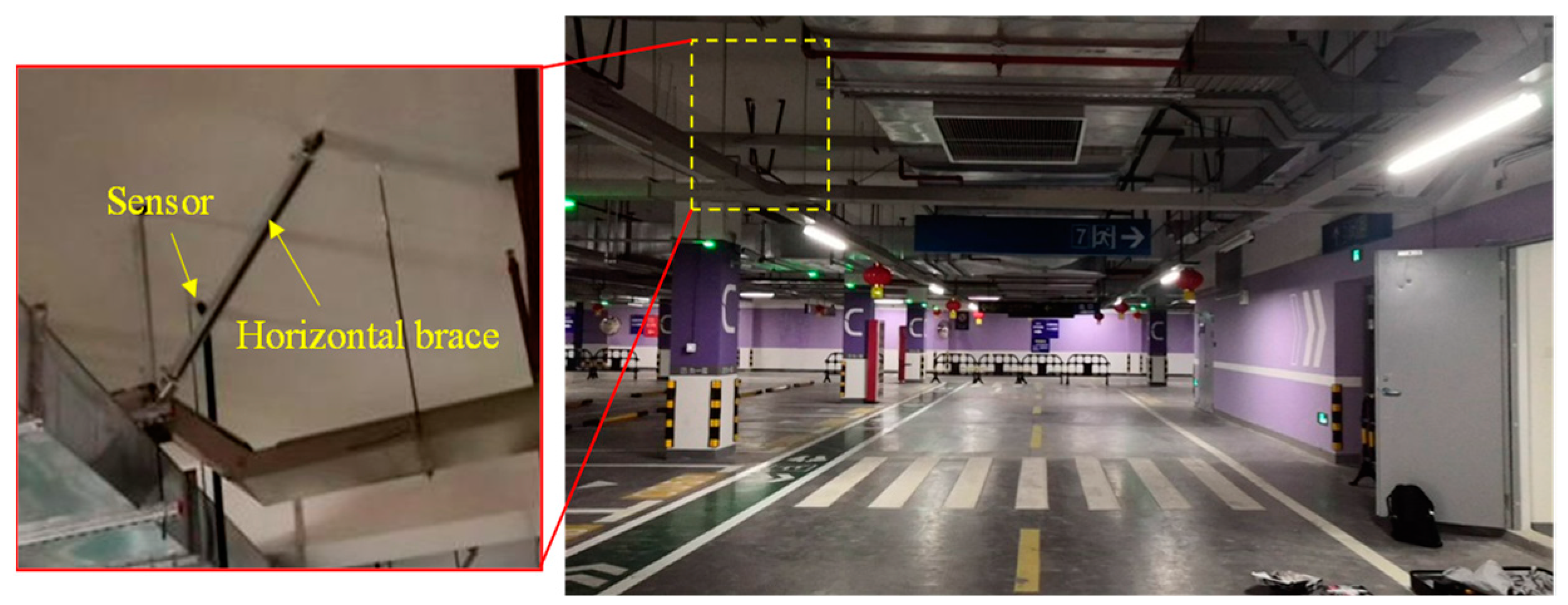

| Bolting Torque N (N·m) | 0 | 2 | 5 | 8 | 10 | 20 | 30 | 40 | 50 |
|---|---|---|---|---|---|---|---|---|---|
| 143 | 132.59 | 130.8 | 134.4 | 144.6 | 142.8 | 142.8 | 148.2 | 143.7 | |
| 143.6 | 130.8 | 130.8 | 136.1 | 142.8 | 143.3 | 146.4 | 145.0 | 148.2 | |
| 142.8 | 130.4 | 131.7 | 140.1 | 145.9 | 146.8 | 143.7 | 144.2 | 148.2 | |
| 141.9 | 130.8 | 131.2 | 144.6 | 144.6 | 144.6 | 143.7 | 145 | 145.9 | |
| 139.3 | 131.2 | 131.7 | 145 | 141.9 | 141.9 | 144.6 | 146.4 | 145 | |
| 139.3 | 130.3 | 131.2 | 143.2 | 143.7 | 146.8 | 147.3 | 146.8 | 147.3 | |
| 136.6 | 128.1 | 131.7 | 139.7 | 143.2 | 145 | 146.8 | 146.4 | 146.8 | |
| 138.8 | 129.5 | 134.3 | 146.8 | 144.2 | 145 | 146 | 146.8 | 147 | |
| 139.3 | 131 | 131.5 | 142 | 145 | 144.7 | 145.6 | 146 | 146.7 | |
| 136.6 | 130.5 | 131.8 | 143 | 145.2 | 145.8 | 146.2 | 144.6 | 147.5 | |
| 140.1 | 130.5 | 131.5 | 141.7 | 144 | 144.7 | 145.3 | 145.8 | 146.8 | |
| 4.55 | 11 | 10.45 | 3.46 | 1.87 | 1.39 | 0.97 | 0.63 | 0 |
| Threshold Value | ||||
|---|---|---|---|---|
| Lightly damaged | 1.5 | 10.0 | 25.0 | 40.0 |
| Severely damaged | 2.0 | 25.0 | 40.0 | 60.0 |
Disclaimer/Publisher’s Note: The statements, opinions and data contained in all publications are solely those of the individual author(s) and contributor(s) and not of MDPI and/or the editor(s). MDPI and/or the editor(s) disclaim responsibility for any injury to people or property resulting from any ideas, methods, instructions or products referred to in the content. |
© 2024 by the authors. Licensee MDPI, Basel, Switzerland. This article is an open access article distributed under the terms and conditions of the Creative Commons Attribution (CC BY) license (https://creativecommons.org/licenses/by/4.0/).
Share and Cite
Song, Y.; Wan, C.; Wang, S.; Li, J.; Meng, J. Development of a Vibration-Based Pre-Alarming Method for Bolt Looseness of Seismic Sway Braces. Buildings 2024, 14, 2711. https://doi.org/10.3390/buildings14092711
Song Y, Wan C, Wang S, Li J, Meng J. Development of a Vibration-Based Pre-Alarming Method for Bolt Looseness of Seismic Sway Braces. Buildings. 2024; 14(9):2711. https://doi.org/10.3390/buildings14092711
Chicago/Turabian StyleSong, Yongsheng, Chunfeng Wan, Shiao Wang, Jiawei Li, and Jiapei Meng. 2024. "Development of a Vibration-Based Pre-Alarming Method for Bolt Looseness of Seismic Sway Braces" Buildings 14, no. 9: 2711. https://doi.org/10.3390/buildings14092711





